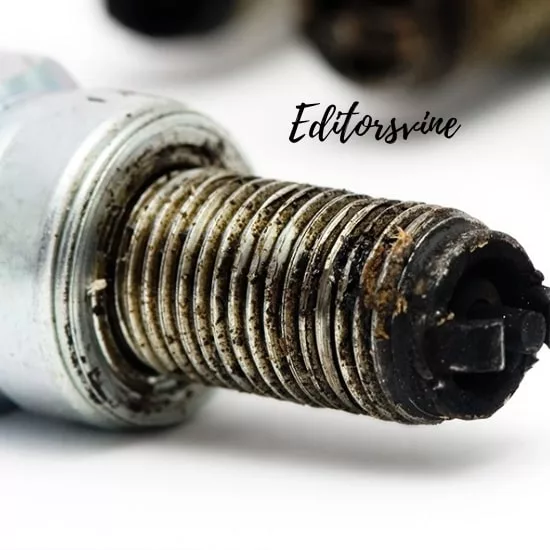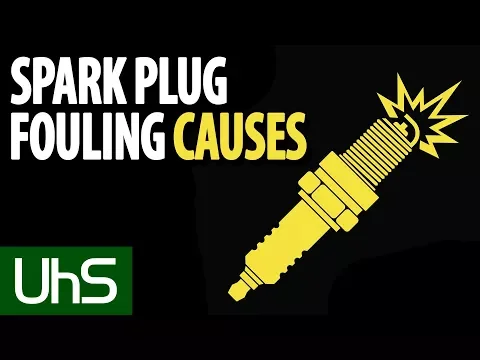
In a chainsaw, the spark plug is vital for ensuring the proper engine operation. While using, you may often find that the spark plug in your chainsaw is not working and a soft, black, dry deposit on the plug.
This is what you can call carbon fouling. Now, what causes black carbon on spark plug?
Sometimes, your air-fuel mixture is not right in proportion, and the temperature in the engine is also not compatible. Maybe the engine is not adequately warmed up before you start using the chainsaw.
To ensure that you find the proper reason for carbon build-up in the spark plug and how to solve it, we will provide a complete guideline here. Make sure you complete reading the whole part of the guide.
So, let’s begin!
Why is The Spark Plug In A Chainsaw Important?
We hope you know how a chainsaw works. If you don’t, this will require another complete guide. But let us enlighten you a little bit.
A chainsaw is a portable and mechanical saw with a two-stroke engine run by a fuel and air mixture.
The two most important parts are – a saw seated within a chain rolled around a bar and an engine (gasoline, two-stroke). This is the basic.
Now from where the spark plug appeared, and why is it essential for your chainsaw?
The spark plug brings the current to the combustion cell of the two-stroke engine from the ignition system to create a spark from the compressed fuel and air mixture.
When the spark plug is creating spark properly, only then can you make sure the engine is working?
Creating spark is not the only liability of a spark plug. It is also used for calculating ionization in the cylinder.
It is crucial to ensure that the spark plug in a chainsaw is igniting the engine, which will keep the engine going.
What Causes Black Carbon On Spark Plug?
Let’s check out the main reasons that may cause black carbon build-up on spark plug in a two-stroke engine like a chainsaw.
1. The Combustion Cycle
The two-stroke engine of a chainsaw works in a combustion cycle. A two-stroke engine naturally can not clean out all the exhausted gases.
And so, the exhaust gases blend with the incoming oil/ fuel mixture and then create a carbon build-up in the spark plug.
While running, the engine sucks air to fuel and expels exhaust gases at the same time. As a result, a mixture of both always exists in the cylinder.
So, dirty air always exists, and when a spark takes place, the carbon dust may deposit on the electrode of the spark plug and different parts of the engine.
2. Rich Fuel Mixture
In a chainsaw engine, the ideal fuel mixture for gasoline and oil is 50: 1. That means if you put 5 litres of gasoline, you should add 0.10 liters of two-stroke oil to that mixture.
If the gasoline and oil mixture is rich, carbon fouling may take place. The high proportion of gasoline creates carbon by incomplete combustion.
When this carbon accumulates, firing at the electrode of the spark, the space between the metal shell and electrode reduces.
The insulator resistance is vital for the spark plug to work correctly. When the black carbon build-up decreases, the space misfiring will take place.
3. Inadequate Heating
Sometimes, black carbon build-up on the spark plug may cause inadequate heating of the engine. Let us explain how.
When the engine is not sufficiently hot, the gasoline does not form a fine mist due to low temperature, therefore not creating a proper mixture with oil.
In the cold region, the external air of the engine is low, and the entry of liquid form of gasoline in the combustion chamber makes it easier to produce carbon.
The same thing happens when a chainsaw is not adequately warmed up before using the saw to cut.
Also, the black carbon caused by such a mixture makes the insulation resistance useless.
4. Plug Heat Range is Too High
On the contrary to the inadequate heat, the high-range heating may cause the spark plug to foul and deposit Black carbon on the spark plug’s electrode.
5. Other Causes
Faults in carburettor maintenance, faults relating to the ignition system(delay in ignition timing), clogging of the air cleaner element, etc.
In a two-stroke engine like a chainsaw, while wondering why your spark plug is not working, and a black carbon clear is formed on the spark plug, check out the things mentioned above.
How To Get Rid of Spark Plug Carbon Fouling?
Black carbon deposits on spark plug cause a misfire of the plug, and your chainsaw engine will not run.
Thinking of getting rid of the problem? Don’t worry.
There is always a way. To fix the problem, first, you need to identify the proper carbon deposition as there are a few types of deposition on the electrode of a spark plug.
Like oil build-up, ash deposition, or burning electrode, you need to know how to read the spark plug properly.
To illustrate the reading method, it will require another long article. But we may elaborate on the critical portion.
Reading Spark Plug in a Chainsaw Engine
The color of the deposits and the gap in the insulation resistance on the electrode will help you to identify if there is a problem with black carbon deposits.
If the gap between the shell and the electrode is 0.02-0.04 mm and there is no black color, then the spark plug is normal.
And maybe the problem you are facing doesn’t have anything to do with the spark plug. The normal spark plug will show you brown or greyish-tan deposits on the side electrode.
If the side electrodes are black but oily, that may be caused by oil fouling.
If the electrode is melted, blusters on the insulator tips white deposited may sign that the spark plug is burned.
But if black, dry deposits are found on the side of the electrodes, that may indicate carbon buildup on the plug.
When you are finished reading and sure that the dry black deposits are caused by carbon, you may now follow the next move.
Cleaning The Spark Plug
Sometimes, a spark plug burdened with a carbon fouling problem can be repaired by properly cleaning the electrode.
While cleaning a chainsaw spark plug, make sure you follow these steps:
- Put safety gear and glasses on. Don’t forget the gloves too.
- Use a fresh piece of cloth or brush to clean any deposits from the spark plug. Using a piston in one hand, and a brass brush will remove the 80% of carbon build-up.
- After taking off the plug from the engine, make sure you dry that well.
- You can use decarbonizing products available in the market. A few well-known decarbonizing products, we can mention Amosil Power Foam, Husky Decarbonizing Oil, and Stihl Decarbonizer.
- Remove any dirt particles using an air compressor. In case you don’t have an air compressor, we hope you can manage canned pressurized air.
- Clean the hole of the spark plug using a rag. And then dry well.
When you complete cleaning, reinstall the spark plugs in the original hole.
Changing The Spark Plug
Most of the time, cleaning is not enough for a spark plug, and a new one may be required. It is always wise to change the spark plug victim of carbon fouling or carbon build-up if you have the option.
To change a spark plug, follow these steps –
- Remove the top cover of the chainsaw by unscrewing it.
- Remove the spark plug from the original hole with the help of a spark plug wrench.
- Add the new spark plug in the head of the cylinder.
- The next job is effortless. Take a wrench and tighten the spark plug in the hole. Always remember, don’t over-tighten it.
- Now reconnect the boot of the spark plug and then attach the top cover.
FAQ
Why Is There No Spark On My Chainsaw Spark Plug?
A lot of things can happen. The most probable causes may be a spark plug in your chainsaw is burned or is oil fouled, or maybe a carbon build-up took place. You need to open the cover and check the plug by reading it correctly.
How Can I Prevent Spark Plug From Carbon Build-Up?
If you plan to prevent your chainsaw from a carbon build-up, always try to make the fuel mixture in an appropriate proportion.
Make sure that you mix the most gasoline and oil properly. Don’t forget to warm up your chainsaw engine to warm up before.
Conclusion
Hopefully, You can drive away your confusion and find out the exact reason for wondering earlier what causes black carbon on spark plug and now easily choose your next move to solve it.
Always keep in mind that the spark plug you are using may ensure the engine’s smooth driving. Make sure you are using the best spark plug available for your chainsaw.

